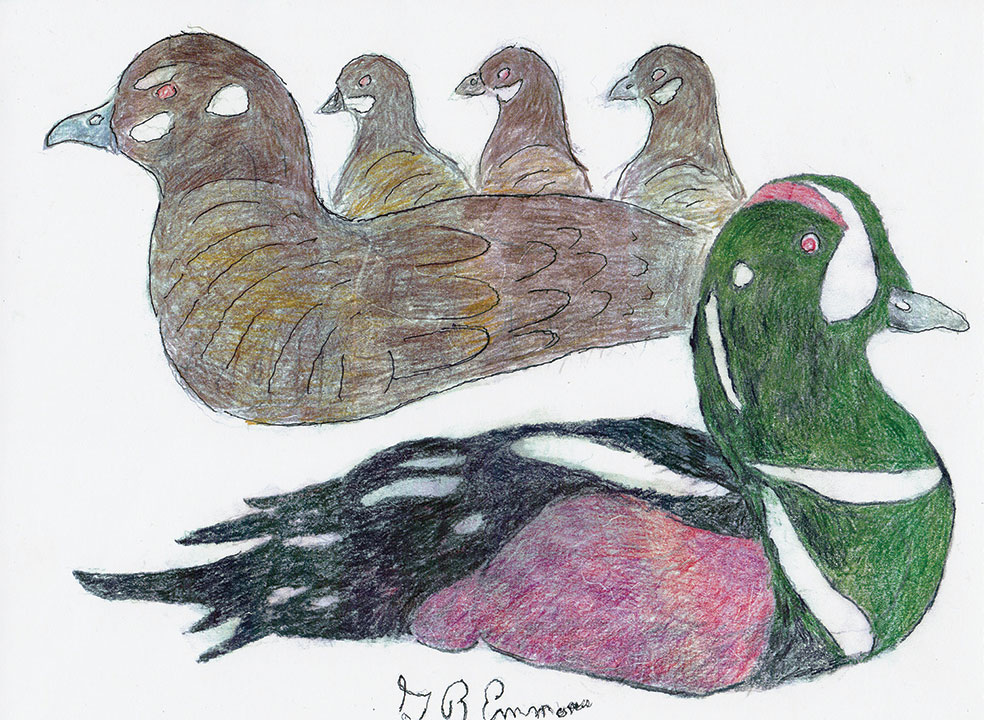The eastern harlequin duck is one of the most brilliantly decorated creatures you will ever see as a bird watcher in both graphic design and flaming color put together in a high profile for the rugged and dramatic coastline it calls home.
At this time of year, when we pass through the seasonal winter equinox, it may come into passing review for you along the Atlantic migratory flyway past remote peninsular outcroppings southward from Newfoundland and Maine past Buzzards Bay in a clearly traced seasonal coastal route all the way around New York and New Jersey, following rivers inland and reaching comfortable inland-country, isolated destinations.
The harlequin duck, like the wood duck, is an exotic example of how Mother Nature paints the males of almost every bird species with brighter, more visible, color-phase identification than the females, as in my illustration. While the female is cloaked in a monotone, dull, camouflaged, earthly brown to secretly and invisibly nest out of sight to predators, the male on the other hand is a high-profile attention getter of masculine macho seeking attraction, not unlike the crowing barnyard rooster or the drumming partridge, beating its chest to announce the dawn of a new day.
Together, the male and female first breed at two years of age, now pairing up as winter approaches. Several males may court one female, surrounding her on the water with raised tails, stretched necks and ritualized head-bobbing movements. When she nests, the site is usually on the ground very close to the water.
Like the wood duck or the freshwater merganser, from the moment her chicks break the eggshells to hatch out, they are already preprogrammed to quickly depart the nest by jumping out with flapping wings and rapid strides to reach the watery habitat.
Just as loons let their young ride on their backs as an early convenience of widespread movement, it would not surprise me if harlequin hens are glad to give buoyant, protective transportation in rough waves of turbulent rocky coastlines and whitewater rivers that are rough on their bodies. Many harlequin ducks endure broken bones from a precarious lifetime being tossed around by pounding waves and rough water of their preferred, stormy aquatic habitat.
The harlequin duck may ultimately prove to be the next living example of Darwin’s theory of survival of the fittest in a challenging environment of abusive, stormy conditions, if somehow able to survive the floodgate of presently changing conditions of global climate from man-made, atmospheric pollution clouding the cyclical planetary revolutions of seasons on earth either permanently or posing an undetermined future for wildlife as well as the human species of modern mankind.
By George B. Emmons
